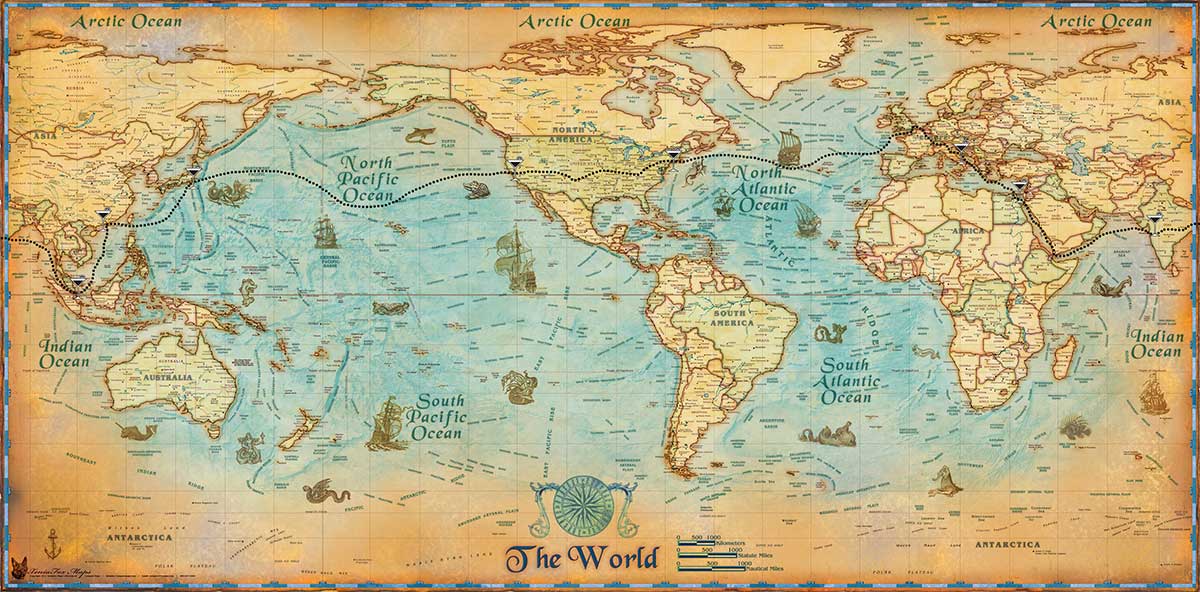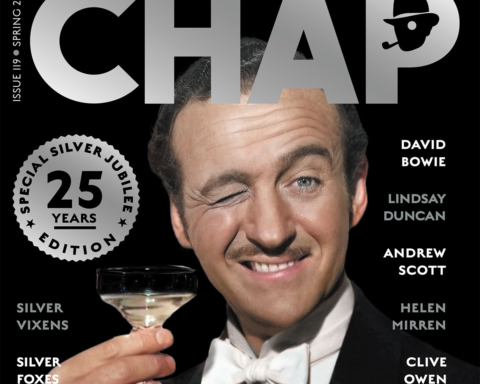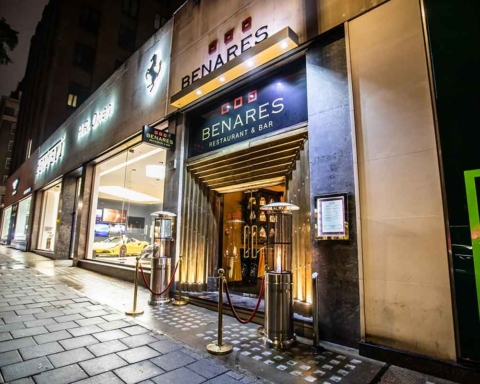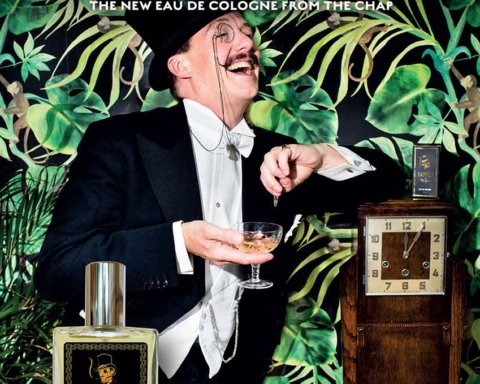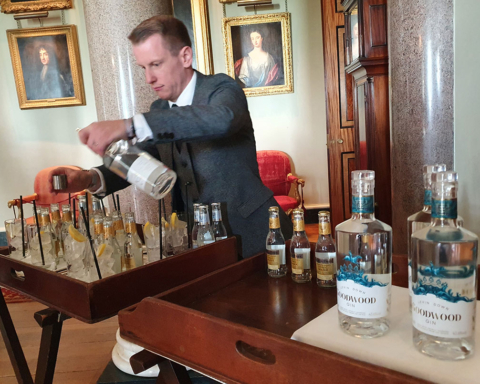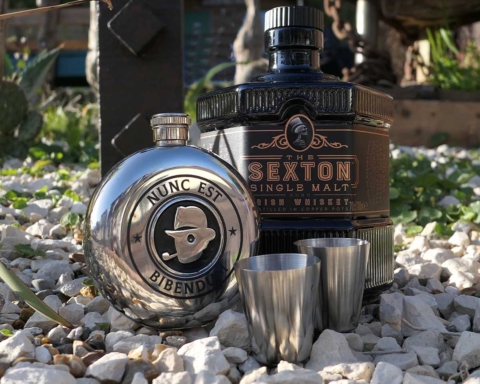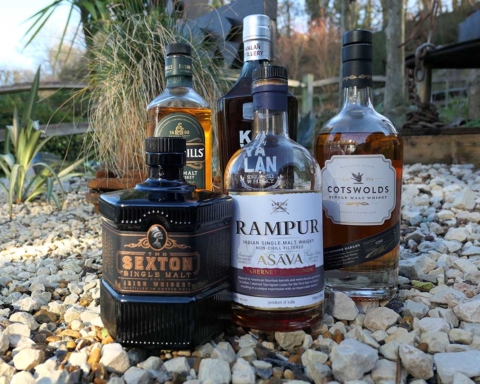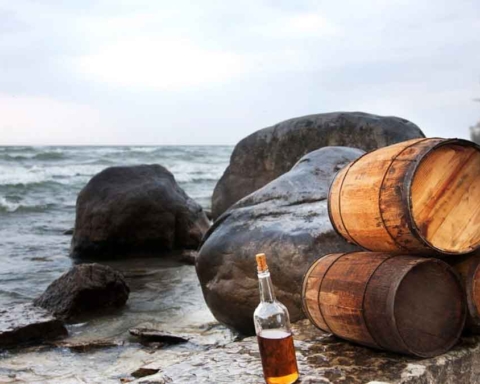Gustav Temple follows in the footsteps of Phileas Fogg to sample a cocktail from each of the eight cities he visits on his circumnavigation.
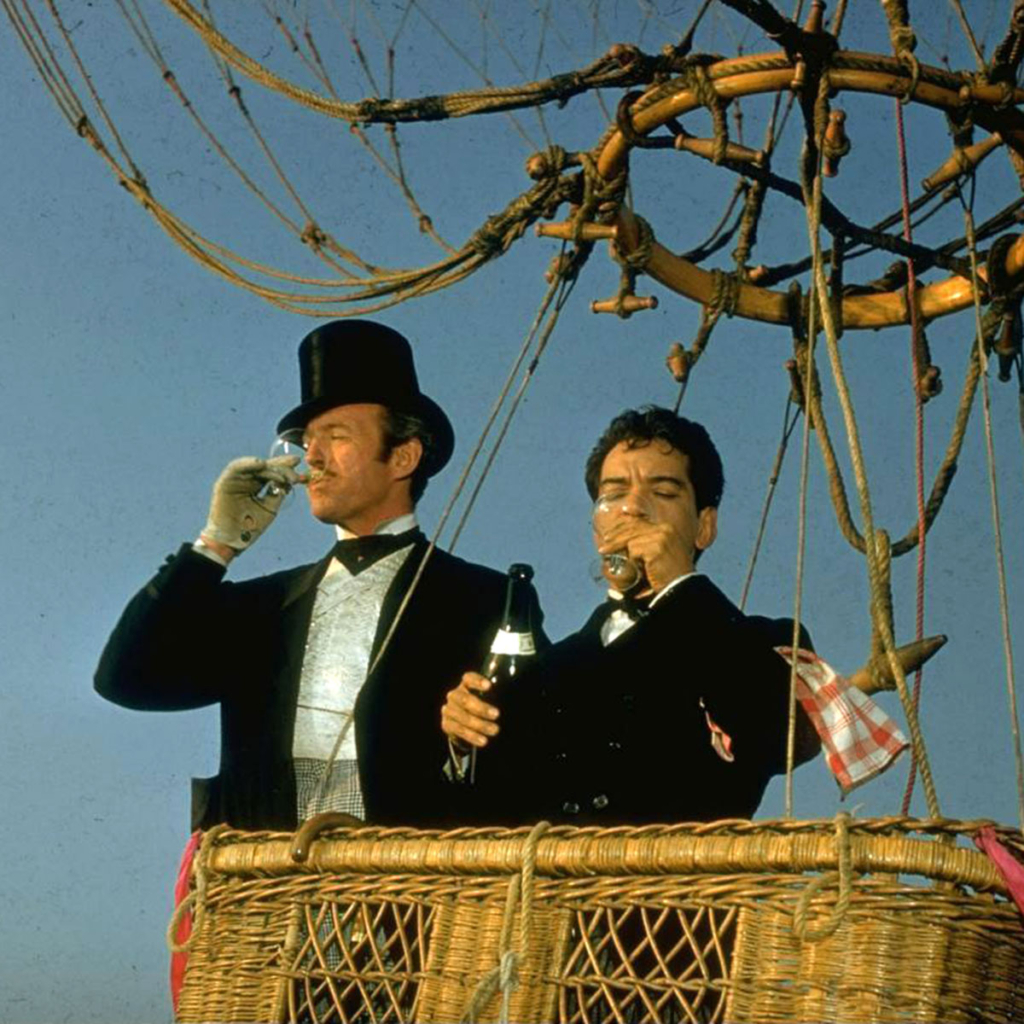
There are as many cocktails are there are cities in the world, and Phileas Fogg’s route in Around the World in 80 Days took him through some of the major drinking centres of the globe. It is not recorded in Jules Verne’s book what particular tipples his adventuring hero partook of while passing through Brindisi, Suez, Bombay, Singapore, Hong Kong, Yokohama, San Francisco or New York. In CHAP Winter 21 we compiled a list of cocktails, with their recipes, whose origins are in or very near each of the eight cities Phileas Fogg passed through on his journey around the world.
Brindisi, Italy
NEGRONI
Phileas Fogg’s first port of call on his transglobal adventure was Brindisi in southern Italy. Not a city particularly known for its cocktails, we must look further north to Milan, where a popular drink invented at the Caffe Camparnino in the 1860s was the Milano-Torino, made with equal parts of Campari and Amaro Cora. The owner’s name was Gaspare Campari. Visiting Americans requested the addition of a splash of soda water and this new version became known as the Americano.
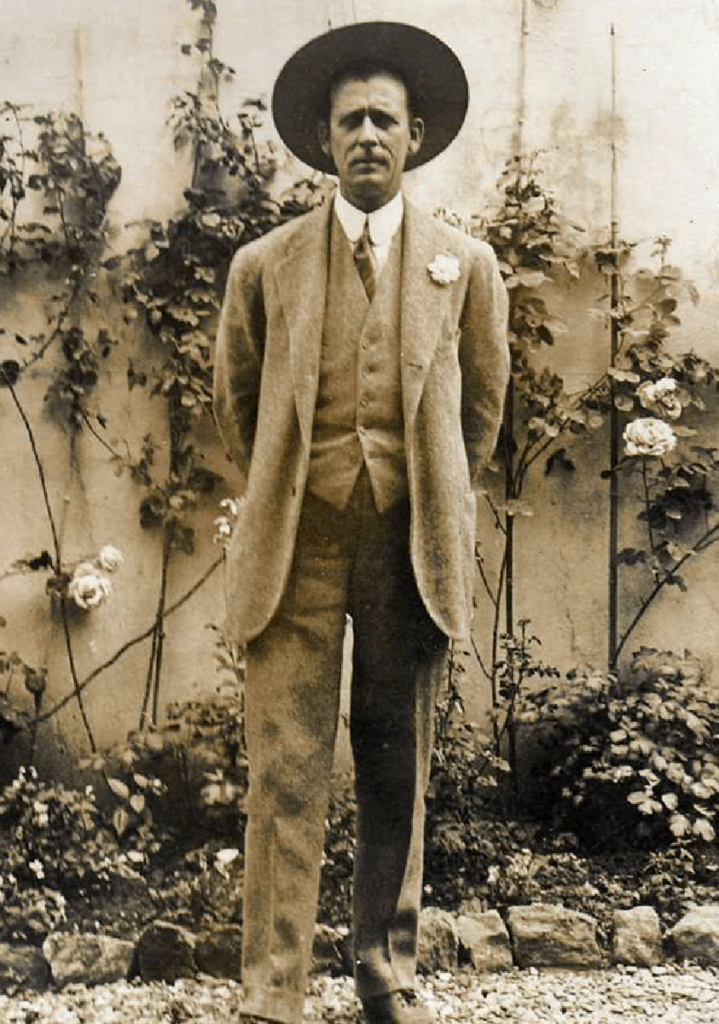
Fast forward to 1919, when Count Camillo Negroni was in the Casoni Bar, Florence, and asked for an Americano with a bit more bite to it. The bartender swapped gin for the soda water and the Count was hooked, always requesting the same combination on future visits to the bar. Other customers adopted the drink and it soon became known as ‘the Negroni’.
This romantic and convenient story was recently upended by a modern-day descendant of the Negroni dynasty, one Colonel Hector Andres Negroni, who claimed that no Count Camillo Negroni ever existed. He asserts that the Negroni cocktail was invented by General Pascal Oliver Comte de Negroni, a Frenchman who, during the Franco-Prussian war of 1870 created a vermouth-based cocktail that came to be known as the Negroni.
Suez, Egypt
SUFFERING BASTARD
During the Battle of El-Alamein, Erwin Rommel’s Afrika Corps were stationed in Egypt, and Rommel was fond of boasting that, “I’ll be drinking champagne in the master suite at Shepheard’s soon.” This was a reference to the Shepheard’s Hotel in Cairo, where British officers would constantly bemoan their hangovers to head barman Joe Scialom at the Long Bar. Joe was the ideal bartender; an Egyptian-Jewish former chemist who spoke multiple languages and had an extraordinary memory for names, faces and which drinks his customers liked.
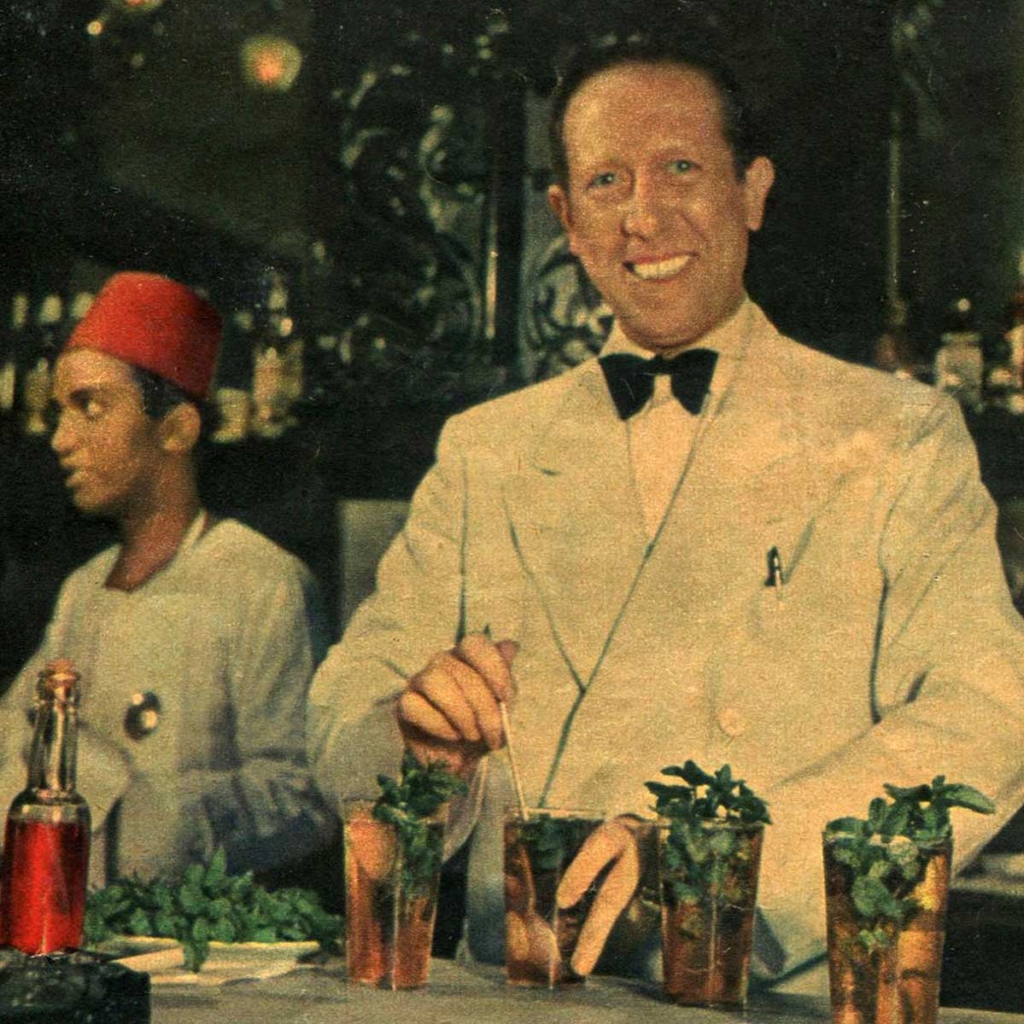
Joe created the Suffering Bastard as a hangover cure, using ingredients that could be sourced locally. Even the ribald British officers baulked at the vulgar name and it became known as the ‘Suffering Bar Steward’. The cocktail became so popular that in 1942 Joe Scialom got a telegram from the British front lines requesting eight gallons of Suffering Bastard (they no longer cared about the vulgar name) to be delivered to the front at El Alamein, by then under the command of Field Marshal Montgomery. At the next confrontation with the Germans, Monty and his troops turned Rommel away and pushed him westward towards an eventual defeat.
SUFFERING BASTARD RECIPE
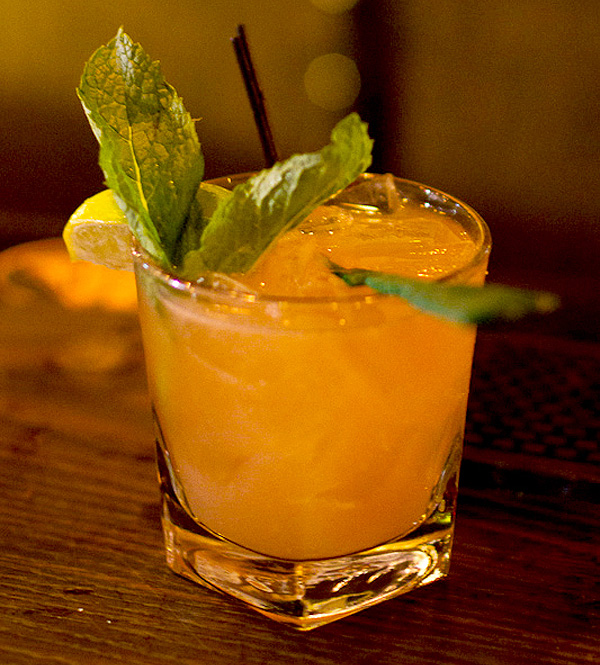
1 Oz (30ml) Bourbon
1 Oz Dry Gin
1 tsp fresh lime juice
1 Dash Angostura Bitters
4 oz chilled Ginger Beer
Shake all ingredients bar the ginger beer over ice in a cocktail shaker. Pour unstrained into an Old Fashioned glass and stir in the ginger beer. Garnish with a sprig of mint and an orange wedge.
Bombay, India
BOMBAY No2
The Savoy Cocktail Book of 1930 was written by Harry Craddock, head barman at the American Bar in the Savoy Hotel, London. Born in Stroud in 1875, Harry was a bit of a globetrotter himself. He worked at Hoffman House and the Knickerbocker Hotel in New York, becoming a US citizen in 1916 and drafted into the army at the end of the First World War. As soon as Prohibition did him out of a job, he hot tailed it back over the Atlantic to England, where his American accent landed him a job at the Savoy and led to his penning what was seen as the definitive cocktail book.
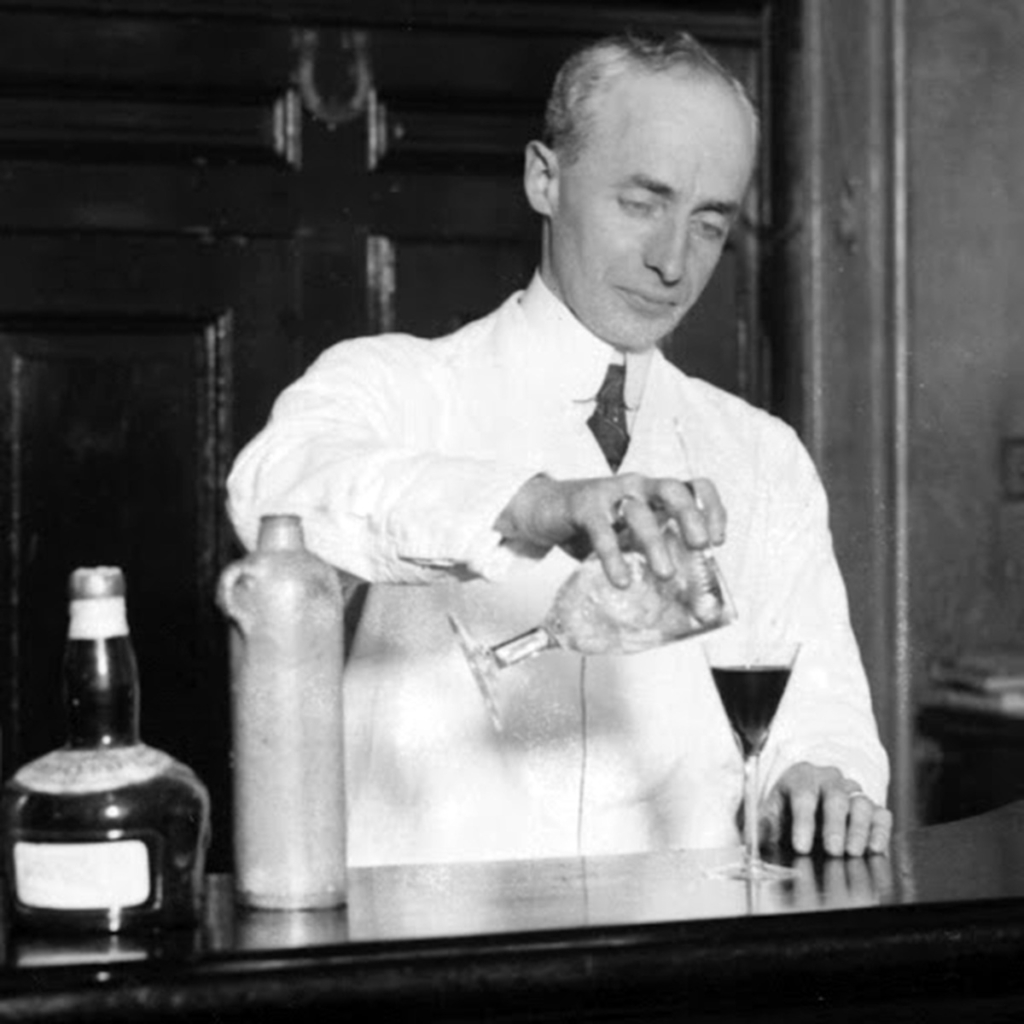
By 1926 there were so many Americans drinking at the Savoy that it became known as the 49th state. As well as inventing the Corpse Reviver, Harry’s signature blend was the White Lady. In fact so attached was he to his recipe for a White Lady that he buried one, in a cocktail shaker, within the walls of the American Bar, in 1927. Despite numerous searches, the ancient relic has never been found. Harry was invited to return to the USA after Prohibition was repealed, but remained in England, taking over as head barman at the Dorchester Hotel. Harry’s Bombay No.2 appeared in the Savoy Cocktail Book published in 1930, among 699 other recipes.
BOMBAY NO.2 RECIPE
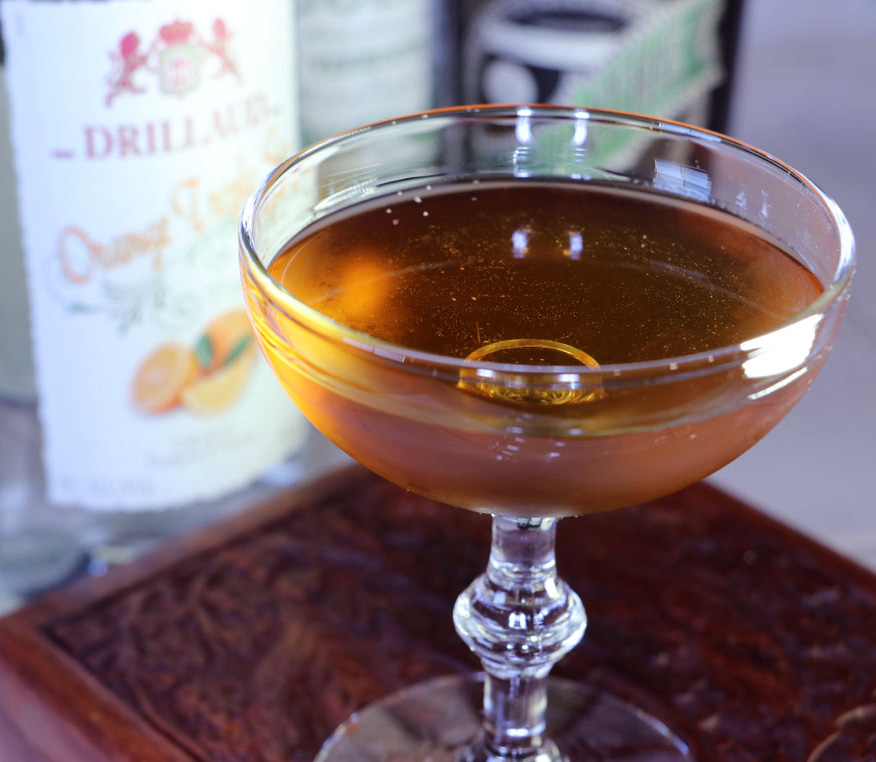
1 dash absinthe
2 dashes Orange curacao
3/4 oz Dry French vermouth
3/4 oz Sweet Italian vermouth
1 1/2 oz brandy 45 ML
Stir all ingredients and strain into coupe glass.
Singapore
SINGAPORE SLING
Sir Stanford Raffles opened the Raffles Hotel in Singapore in 1887. The hotel’s Long Bar quickly became a popular haunt for British expatriates, and by 1899 at the helm was Chinese-born Ngiam Tong Boon, who had run away from his home town of Hainan and worked on a French ship before winding up at the Raffles Hotel in Singapore. One of the most popular cocktails there was a Gin Sling, enjoyed by, among others, Noel Coward in the 1930s. Ngiam Tong Boon added his own flourishes, which included the addition of cherry liqueur to give the Singapore Sling its bright pink colour.
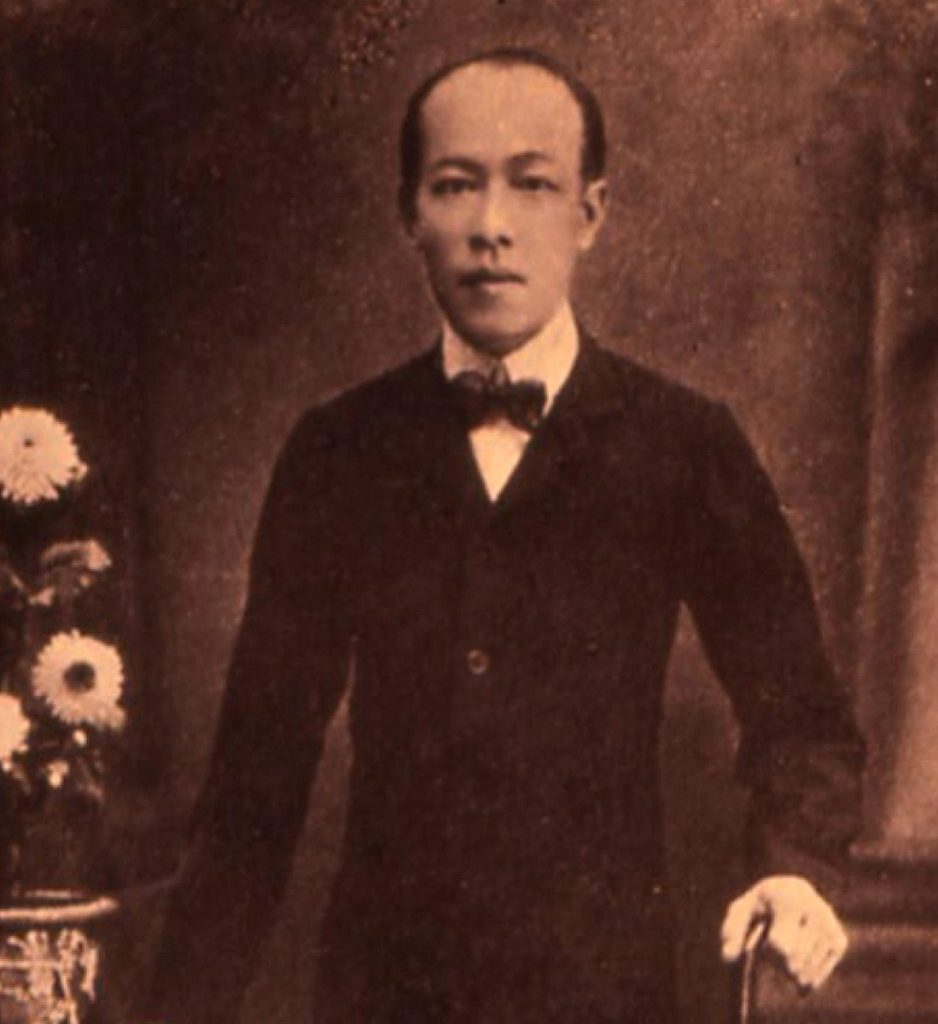
Unfortunately, Boon never recorded his exact recipe and when the Japanese invaded Singapore in 1942, they used the Raffles Hotel as a transit camp for prisoners of war until 1945, and were not very interested in making Singapore Slings for them. The hotel’s only source for the recipe, which they hand out en a printed card to all guests, is based en a handwritten note handed in to the bar by a guest in 1936. Since then, heated debate has raged about the Singapore Sling’s true recipe, with some bartenders insisting that it can be made simply with equal measure of dry gin, cherry brandy and Benedictine, topped up with soda water. The recipe reproduced below is the one that Raffles Hotel is still serving its guests after more than 100 years since Ngiam Tong Boon disappeared back to China.
SINGAPORE SLING RECIPE
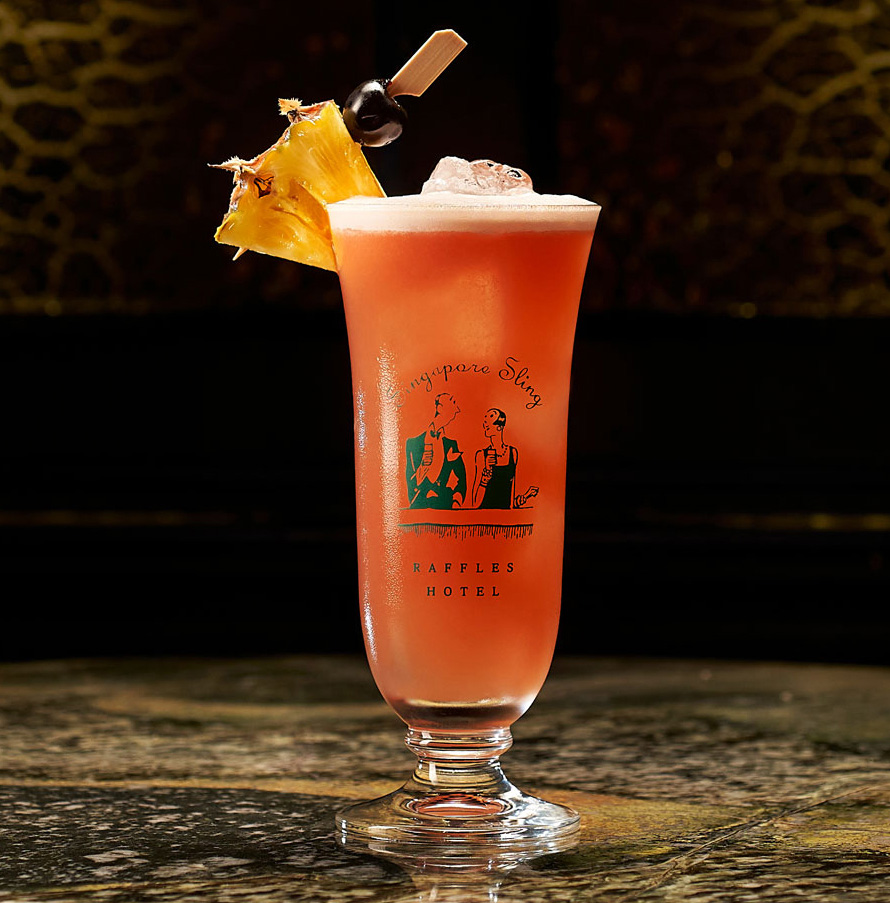
1 oz Gin
½ oz Cherry Heering Liqueur
½ oz Triple Sec
¼ oz Benedictine D.O.M.
½ oz Lime Juice
4 oz Pineapple Juice
¼ oz Grenadine
1 dash Angostura Bitters
Shake over ice in a cocktail shaker and serve in a tall glass, topped up with soda water.
Hong Kong
THE GUNNER
Before Britain’s handover to China, the most popular cocktail among the expat community in Hong Kong was called a Gunner. Since this cocktail is non-alcoholic, we shall pass over it, offering the recipe only for those who really insist on drinking cocktails without alcohol in them.
THE GUNNER RECIPE
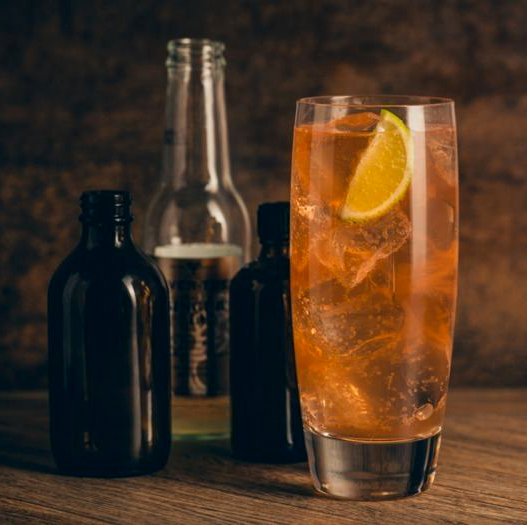
Coat the inside of a highball glass with Angostura Bitters. Fill with equal parts ginger ale, ginger beer, stir and garnish with three slices of fresh lemon.
Yokohama, Japan
BAMBOO COCKTAIL
Like all great cocktails, the origins of the Bamboo are shrouded in mystery. “I have had three Bamboo Cocktails, and I am totally bamboozled because of all the booze”. This was penned in 1886 in an American newspaper, referring to a new drink that was sweeping the nation. The man credited with inventing the Bamboo was one Louis Eppinger, a German barman who, after running various saloons in the United States, including the Bureau Saloon in Portland, came to work at the Grand Hotel, Yokohama in 1890. There is evidence that the Bamboo already existed before he got there, although perhaps in Eppinger’s mind, as the cocktail had been served to English sailors passing through the Pacific port of Portland where he had his saloon. Englishmen would certainly have delighted in a cocktail that contained their beloved sherry. The only other well-known cocktail made with sherry is the Adonis (two parts Oloroso sherry, one part sweet vermouth, two dashes of bitters), but that came after the Bamboo in the early 20th century.
THE BAMBOO RECIPE
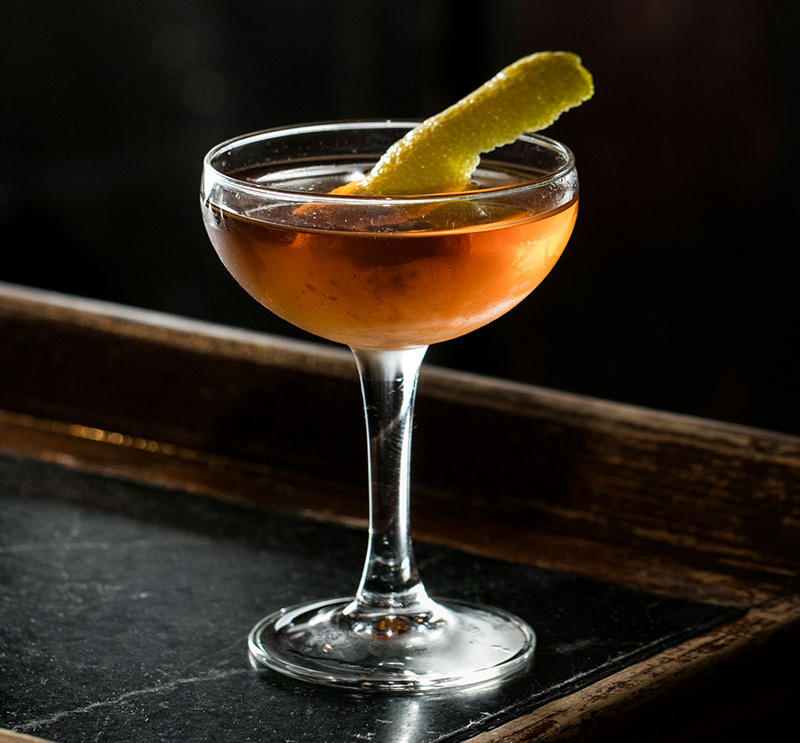
1 ½ oz Tio Pepe fino sherry
¾ oz Dry vermouth
¾ oz Sweet vermouth
Stir all ingredients and strain into a chilled coupe glass.
San Francisco
MAI TAI
Victor Jules Bergeron, better known as Trader Vic, opened his first restaurant in Oakland, San Francisco in 1934. They served Polynesian food, adding dishes from France, China and America in what would today be called ‘fusion cuisine’. Trader Vic, along with Ernest Raymond Beaumont-Gantt of Don the Beachcomber’s Bar, started what became known as Tiki culture, with influences from south east Asia, the Caribbean and Hawaii. They did this mainly through cocktails, though it spawned a whole industry in kitsch homeware and sculpture. One evening in 1944, Trader Vic was entertaining two friends from Tahiti at his bar and decided to make them a special cocktail from some Jamaican rum.
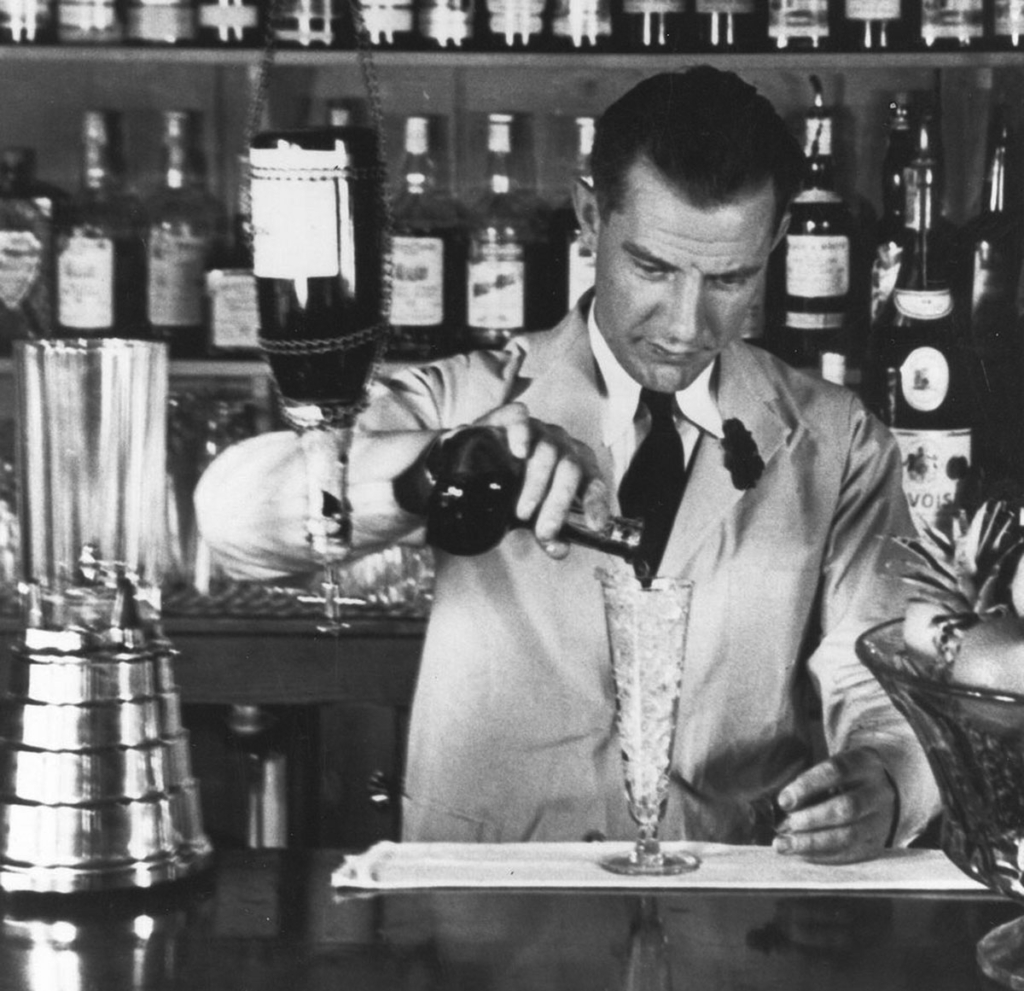
He mixed it with fresh lime, orange curaçao, some rock candy sugar and splash of French orgeat syrup, shook it over shaved ice and stuck half a lime shell and a sprig of mint on top. His Tahitian friend took a sip and declared “Mai Tai-Roa Aé”, which is Tahitian for ‘Out of this world’. As soon as the drink became a national success and was exported to Hawaii by Vic, his Tiki rival Ernest suddenly laid claim to inventing the Mai Tai, leading to a lengthy legal battle in the 1970s. Trader Vic summed up his feelings privately by saying “Anyone who says I didn’t create this drink is a dirty stinker.” Vic won the case and never set foot in Don the Beachcomber again.
MAI TAI RECIPE
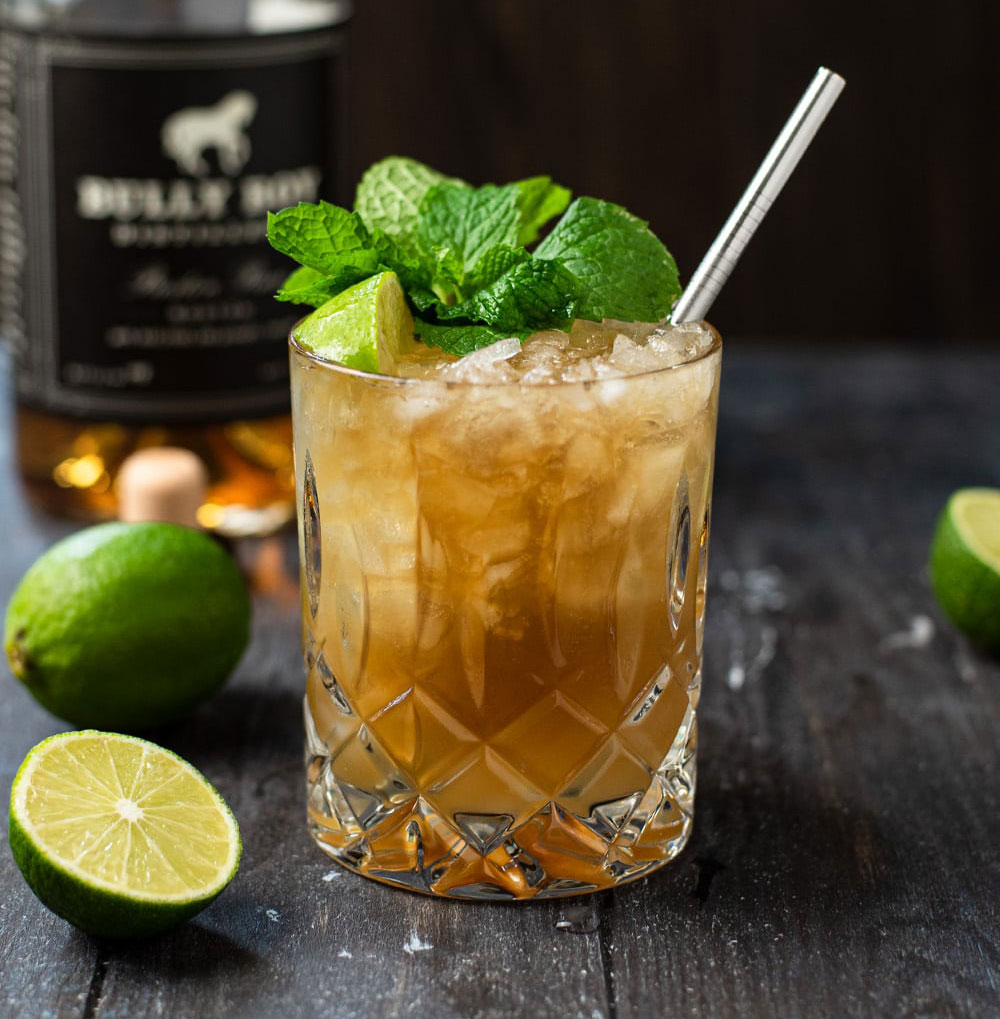
2 oz dark Jamaica rum
1/2 oz orange curaçao
1/4 ounce rock candy syrup
1/4 ounce orgeat syrup (or plain sugar syrup)
1 lime
Cut the lime in half, squeeze its juice over shaved ice in a mai tai glass (or any decent sized tumbler), saving one spent lime shell. Add the remaining ingredients and enough shaved ice to fill the glass. Shake by hand and decorate with the lime shell and fresh mint.
New York
MANHATTAN
Once again, the origins of this classic cocktail are the subject of huge speculation and heated arguments in cocktail bars. At one end of the bar are those who insist that the recipe was invented by Dr. Iain Marshall in 1874 for a party by Lady Randolph Churchill, mother of Winston Churchill. The party was being held in the Manhattan Club in New York, hence the name of the cocktail. Those on the other end of the bar declare that Lady Randolph Churchill was pregnant with Winston in England at the time, giving birth to Winston in November 1874.
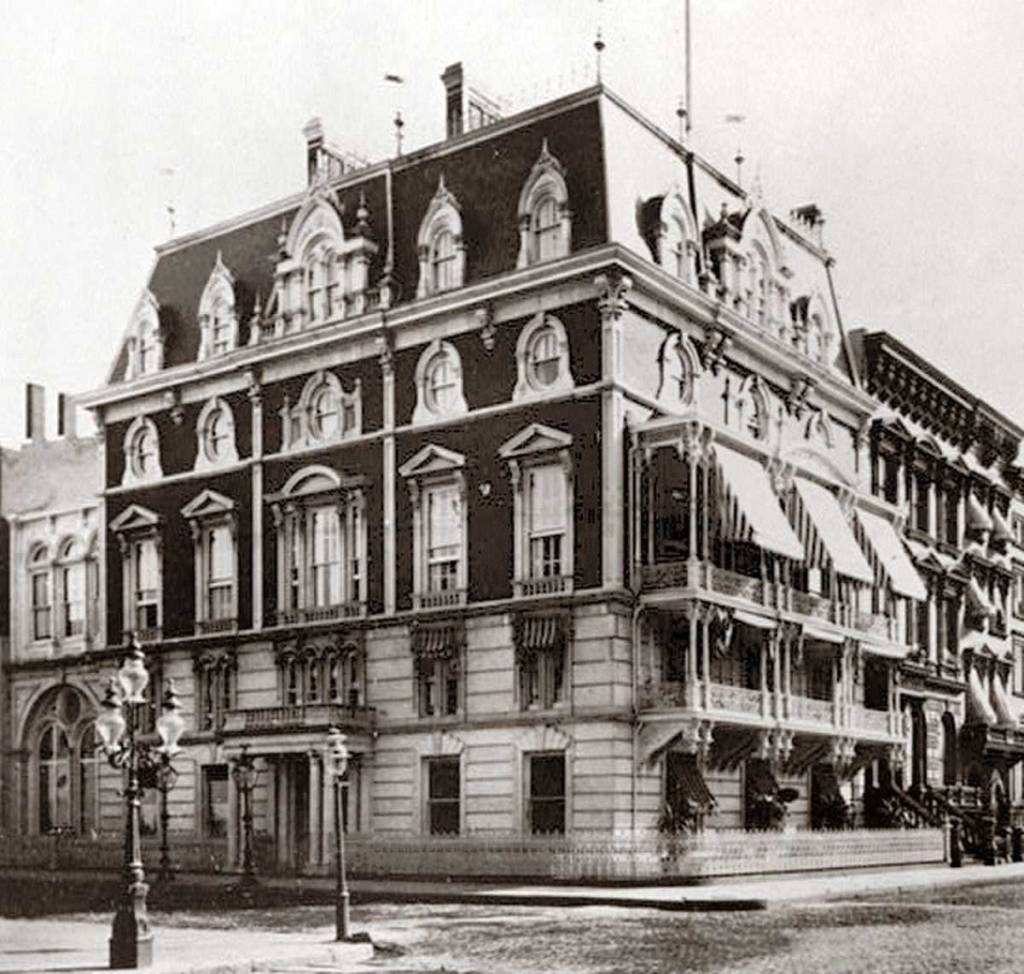
Suddenly, a voice emerges from the shadows at the end of the bar. “You’re both wrong,” it says in a voice marinated by rye whisky, “the Manhattan was invented in the 1860s by a man named Black, who lived along the street from a renowned cocktail bar in New York called Hoffman House.”
“A man named Black!” the others scoff, swigging from their glasses. Finally, the first sensible voice emerges, this time from behind the cocktail bar from the bartender himself. “It is impossible to determine the true origins of such a popular and simple cocktail. The only important thing is that it is made properly, with Rye whisky rather than bourbon, and with Italian Vermouth rather than French. The reason for this is that French vermouth is a sort of wine whereas the Italian variety is more of a cordial.” There is a stunned silence at the bar, broken only when three voices simultaneously utter, “A Manhattan made with rye whisky and Italian vermouth, please.”
MANHATTAN RECIPE
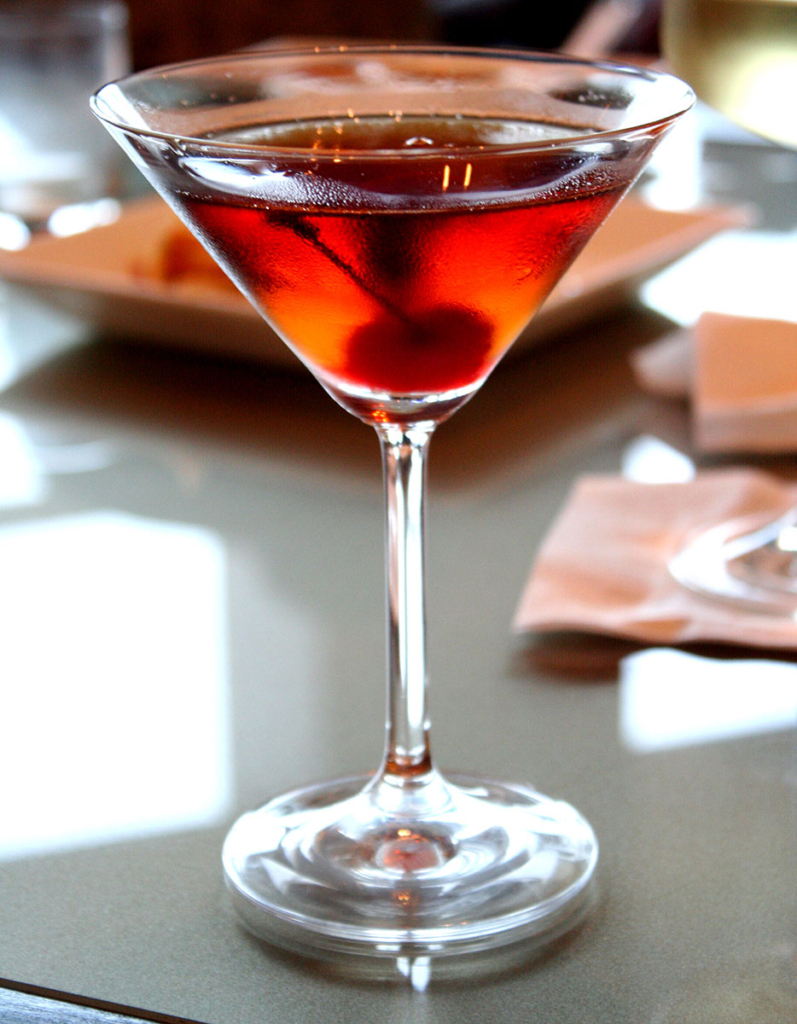
1 ½ oz rye whisky
½ oz Sweet Italian vermouth
2 Dashes Maraschino syrup (from a jar of maraschino cherries)
1 dash Angostura Bitters
Stir all ingredients in a mixing glass. Strain into a cocktail glass and garnish with one maraschino cherry.

